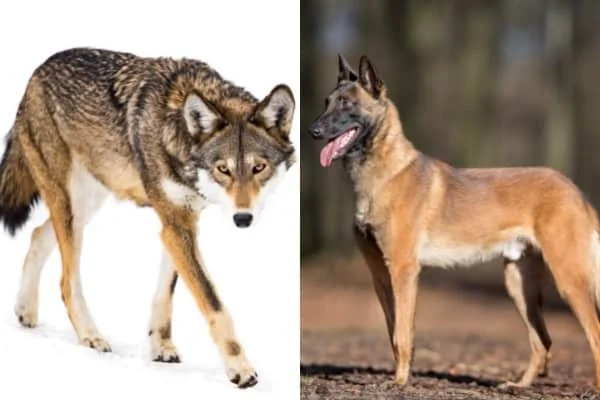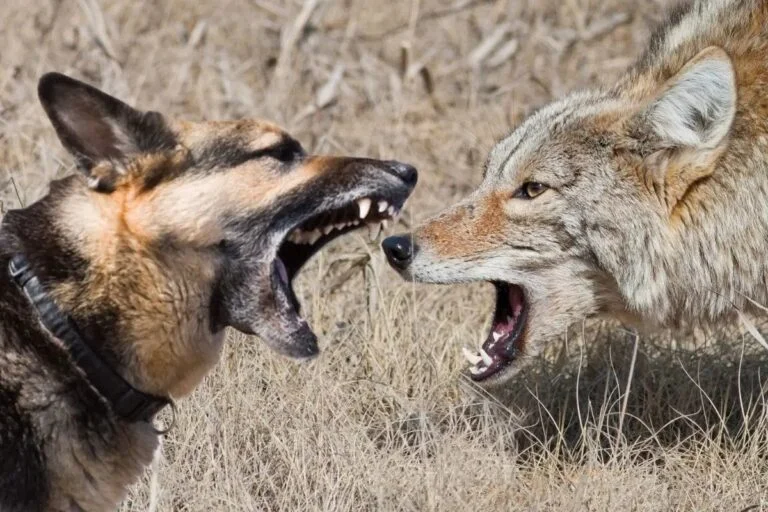Can A Belgian Malinois Kill A Wolf?
Belgian Malinois vs. Wolf: Exploring the Myth and Reality. Many tales have contrasted domesticated dogs against their wild progenitors within the complex web of animal legends and mythology. One of the most contentious issues in this field is whether a sturdy breed such as the Belgian Malinois can genuinely compete with the untamed power of a wolf. We will explore the facts, debunk myths, and offer clarification on this fascinating topic in this article.
Overview of the Belgian Malinois Breed
Knowing the traits and advantages of the Belgian Malinois is crucial to comprehending the dynamics of such a fictitious meeting.
Physical Characteristics and Skills
- Size: Adult males typically weigh between 60 and 80 pounds and are 24 to 26 inches tall.
- Speed: Known for their agility, they are capable of brief bursts of up to 30 mph.
- Temperament: They are well-suited for military and law enforcement duties because of their high level of intelligence, trainability, and intense loyalty.
- Jaw Strength: Although not the strongest biting force among canines, it is nevertheless rather strong, particularly when the dog is attacking or defending.
The Wolf: untamed grandeur
Wolves are untamed creatures with unique survival instincts and traits that have been refined over thousands of years.
Physical characteristics and survival abilities
- Size: Wolves vary a lot throughout species, but the gray wolf, for example, can weigh between 70 and 145 pounds and be 26 to 32 inches tall at the shoulder.
- Speed: A wolf can sprint up to 35–40 mph, but for extended periods, they can only maintain a steady speed of about 5 mph.
- Temperament: Wolves have complex social structures and are pack animals. Their urge for survival dictates much of their behavior.
- Jaw Power: Among canids, wolves possess one of the strongest bite forces, which is essential for pursuing huge prey.
Wolf vs. Belgian Malinois: A Comparison of Might
Considering the characteristics of both the wolf and the Belgian Malinois, a face-to-face encounter would not be easy.
Advantages and Disadvantages
| Belgian Malinois | Wolf | |
|---|---|---|
| Aspect | lighter and smaller | bigger and more substantial |
| Swiftness | Quick and nimble | quicker in short sprints |
| Powerful but constrained | Better because of the necessity for wild survival | |
| Instruction | Capable, well-behaved | instinctive and focused on packs |
Myth versus Reality
“Can a Belgian Malinois kill a wolf?” is the question. fascinating yet has the potential to spread false beliefs.
Recognizing the Type of Question
- Wild vs. Domesticated: Belgian Malinois, no matter how strong they may be, are domestic dogs; wolves are wild predators.
- Unnatural Encounter: These two animals would not normally engage in a death match with one another in the wild. The wolf may stay away from conflict unless it feels threatened or is really hungry, as the malinois is inclined to do.
- The Pack Factor: Unless they are cornered, wolves typically hunt in packs, and they are less prone to fight.
Frequently Asked Questions
-
- Have Belgian Malinois ever faced wolves in the real world?
Confrontations in real life are uncommon. The majority of interactions that are documented involve territorial conflicts or livestock-guarding dogs.
-
- Is it possible for a Belgian Malinois pack to defeat a wolf pack?
Wolves have evolved with pack hunting techniques, thus while a group may boost the odds, this situation is very unpredictable.
-
- What is it about this contest that is so fascinating?
Human fascination with war myths and dog breed comparisons, stoked by made-up stories and motion pictures, frequently gives rise to the dispute.
In summary
Though it’s entertaining to imagine fight scenes, it’s important to keep in mind that wolves and Belgian Malinois play different roles in the ecosystem. Both are amazing in their own right, and none is intended to purposely take aim at the other. Rather than using these species as weapons against one another, it is our responsibility as responsible pet owners and wildlife enthusiasts to enjoy, conserve, and understand these species.








